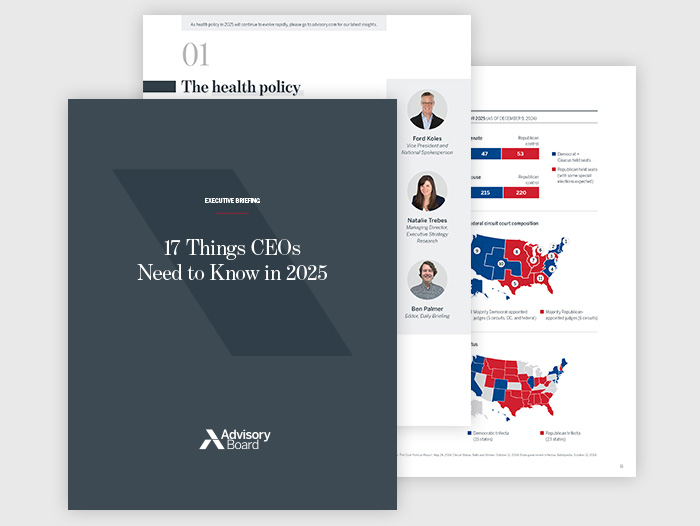Our highly anticipated annual State of the Industry presentation breaks down the complexities of healthcare into a clear, concise 90-minute format — and with Advisory Board Expert Support, you can bring it directly to your organization in-person or virtually. Our researchers provide customized, actionable insights to align your leadership team, board, or C-suite with your organization's most pressing priorities.
- Get the latest research
- Explore policy & payment trends
- See the future of hospital services
- Design forward-looking care networks
- Navigate specialty pharmacy
- Protect healthcare data
Don't miss out on the latest Advisory Board insights
Create your free account to access 1 resource, including the latest research and webinars.
Want access without creating an account?
You have 1 free members-only resource remaining this month.
1 free members-only resources remaining
1 free members-only resources remaining
You've reached your limit of free insights
Become a member to access all of Advisory Board's resources, events, and experts
Never miss out on the latest innovative health care content tailored to you.
Benefits include:
You've reached your limit of free insights
Become a member to access all of Advisory Board's resources, events, and experts
Never miss out on the latest innovative health care content tailored to you.
Benefits include:
This content is available through your Curated Research partnership with Advisory Board. Click on ‘view this resource’ to read the full piece
Email ask@advisory.com to learn more
Click on ‘Become a Member’ to learn about the benefits of a Full-Access partnership with Advisory Board
Never miss out on the latest innovative health care content tailored to you.
Benefits Include:
This is for members only. Learn more.
Click on ‘Become a Member’ to learn about the benefits of a Full-Access partnership with Advisory Board
Never miss out on the latest innovative health care content tailored to you.

























